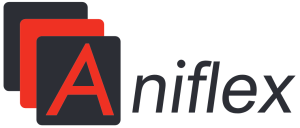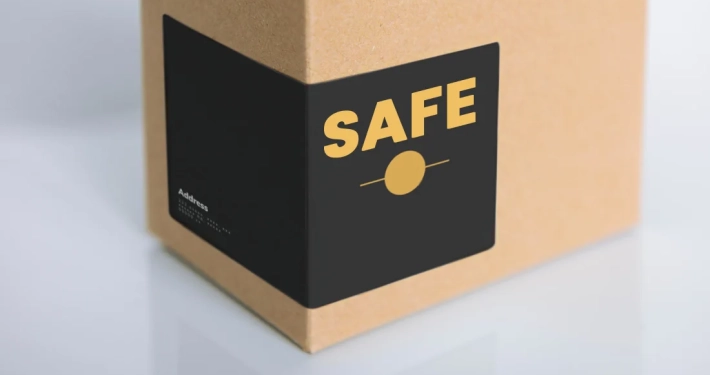Security seal labels
The label industry offers many solutions used to protect against theft and tampering, as well as to protect against image loss. This can be achieved both by using self-adhesive labels and other solutions, e.g. paints and varnishes. We invite you to learn more about how to protect the products.
Self-adhesive security seal labels protect against an attempt to break the label or the package of the product; they are used mainly for securing expensive products or consumer electronics. Our self-adhesive label printing house produces them using cutting-edge printing technologies. However, it should be remembered that modern solutions not only provide protection against theft but are also a way to differentiate the product and are an effective form of communication.
Security seal labels
The self-adhesive label industry offers a range of solutions to protect against theft, copying and tampering. Among the most commonly used security labels are:
– VOID labels – one of the most effective ways to secure personal property. Self-adhesive labels can be white, silver or clear. When torn off, they leave a chessboard pattern, logo, colour or inscription on the surface and the adhesive used makes it impossible to stick it back on. They are resistant to dirt, temperature fluctuations as well as water and UV rays, so they can be used outdoors.
– delaminating labels – destroyed (delaminated/torn) when attempted to be removed. Available: white paper/foil.
– crumbling labels – which has very strong adhesive in relation to the material used, due to which they crumble or deform when an attempt is made to tear them off. The white colour of crumbling labels ensures the correct readability of the bar code placed on the label.
– destructible labels – any attempt to tamper with the label results in its tearing into small pieces. This group includes No Peel labels, which, when peeled off, tear into small pieces leaving additional marks on the surface. Destructible self-adhesive labels have high resistance to grease, dirt, water, temperature fluctuations, and UV radiation.
– Triple Bond labels – used when permanent labelling of a product is necessary. This is due to the fact that they use a rubber-based adhesive that is 3 times stronger than the standard adhesive used in paper labels. These labels can be applied to both smooth and rough surfaces and are also suitable for outdoor use. They have a high peel resistance parameter.
– authentication labels – a group of security fibre designs laminated into a self-adhesive material to make the label difficult to counterfeit.
– security holograms – one of the most effective ways to confirm the authenticity of a product. Currently, the label industry offers 20 standard PP holographic designs.
Protective paints and varnishes
Self-adhesive labels are not the only way to secure a product. Another type of solution is the use of appropriate paints and varnishes. Manufacturers aiming at protecting their products against tampering or copying may decide to choose an individual Pantone colour, which is a specially developed shade, e.g. giving the impression of depth or movement in a design element. This solution is often adopted by world leaders in the food, cosmetics and telecommunications industries. Another solution proposed by the label industry is the use of modified varnish, such as varnish mixed with glitter or pigments – difficult to reproduce without knowledge of the “additive” and the proportions used. Manufacturers who decide to use paint as an element of protection can also choose paints based on fluorescent pigments with a very strong luminescent effect. Their colour cannot be copied using a scanner or photocopier. The colour obtained on the copy is completely different from the original.
The above mentioned are only some of the solutions offered by the label and packaging industry. In order to get acquainted with the full offer of paints and varnishes used as protection, we recommend contacting the specialists, who will not only provide answers to all your questions but will also help you choose the right type of protection for your product.
Technologies used to secure products
The self-adhesive label industry also offers means of securing a property through the use of technology developed specifically for this purpose. The following are the most common solutions:
– cryptoglyph – technology involving the printing of micro dots that are imperceivable to the naked eye. The dots are placed randomly and camouflaged with imperfections on the surface of the package. The authenticity of the packaging is checked by scanning the micro pattern using a flatbed scanner or a smartphone with special detection software installed, and then comparing it with the pattern stored as an original in the database;
– relief printing – a method consisting of printing a special text or logo in four layers corresponding to CMYK colours. The human eye will only see a black field, but when touching the print there will be a noticeable thickening, which is supposed to allow the label to be identified as authentic;
– raster – a method involving the incorporation into the packaging design raster images invisible to the human eye, which can be detected only using a special device with a built-in magnifying lens and installed software;
– taggant – a method involving the incorporation of chemical particles into paper or toner. Once “applied” taggants cannot be removed from the substrate or toner. Also, it is almost impossible to counterfeit them. Taggants can be detected using a special laser to verify the particles.
Aniflex security seal labels
Creating a design that will fulfil its purpose is extremely important, which is why it is a good idea to entrust it to specialists. As a manufacturer with many years of experience, we offer advice in preparing the design and selecting the appropriate form of protection for your product. An individual approach to each customer ensures that the prepared design will be tailored to your needs.

